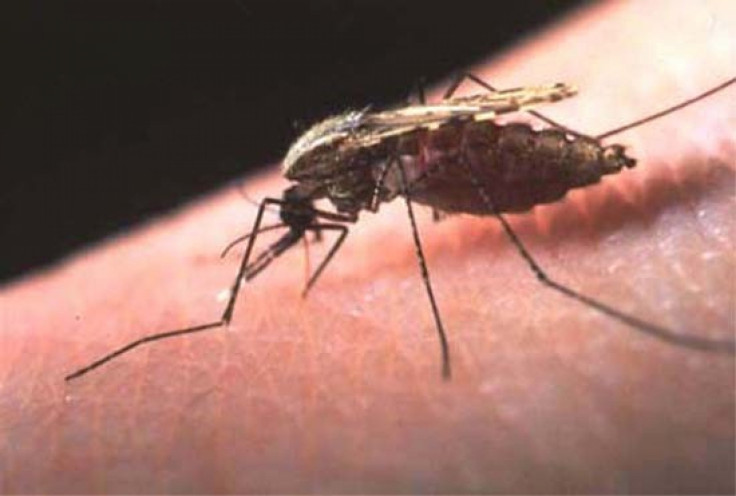Malaria Parasite Taken Out By Genetically Engineered Bacteria

Scientists say they've found another weapon against malaria: genetically engineered bacteria assassins.
Despite millions of charitable dollars poured into anti-malaria drugs and preventative measures, the disease still killed around 655,000 people in 2010 alone, mostly African children under 5 years old.
In a paper published in the Proceedings of the National Academy of Sciences on Monday, Johns Hopkins University researcher Marcelo Jacobs-Lorena and his colleagues describe how they modified the Pantoea agglomerans microbe, a plant pest closely related to E. coli, so that it would make proteins that target the malaria parasite at the most vulnerable stage of its life cycle -- when it hides in the gut of the mosquito. Little protein chains made by the modified P. agglomerans poke a hole in the malaria parasite's outer membrane, spilling its insides out and killing it.
It's very specific. It kills only the malaria parasite and does not affect the mosquito or humans, or even other bacteria residing in the mosquito's gut, Jacobs-Lorena said in a phone interview.
The modified bacteria also have an alternative way of attacking the malaria parasite by binding to a protein in the mosquito's blood called plasminogen. The parasite needs to recruit plasminogen in order to move out of the mosquito's gut, but the engineered bacteria swoops in and blocks off the parasite's access point to the protein.
We feel it's important to use different mechanisms to kill the parasite to avoid it developing resistance to just one agent, Jacobs-Lorena said.
In their experiments, the researchers delivered the bacteria to mosquitoes by soaking a cotton ball with a solution of the bacteria and sugar (mosquitoes often supplement their blood meals with a sugar snack).
Once it took up residence in the mosquitoes, the modified bacteria inhibited up to 98 percent of human and rodent malaria parasites from developing. They also found that the number of mosquitoes carrying parasites decreased by up to 84 percent after the bacteria was introduced.
About 10 years ago, Jacobs-Lorena was working on a different strategy for combating malaria where researchers inserted genes into the mosquitoes to make them resistant to the parasite.
The strategy worked in the lab, but practical implementation turned out to be difficult. It's not sufficient to go release millions of transgenic mosquitoes and hope they take over, he said.
Getting the bacteria to mosquitoes out in the wild is relatively simple. Mosquitoes are mostly active at night; they need a dark, humid spot to rest during the day. In a trial run in a small African village, the researchers put the bacteria and sugar-soaked cotton balls inside clay jars. The mosquitoes flocked to the jars to bed down for the day, Jacobs-Lorena says.
But there are obviously other complications that arise when you talk about releasing genetically engineered organisms into the wild. Scientists will need cooperation from various regulatory and government agencies, as well as local authorities.
Plus the general sentiment towards genetically modified organisms isn't exactly welcoming, Jacobs-Lorena acknowledged.
I feel this is less for logical reasons but mostly from fear of the unknown, he said.
Even if there isn't resistance to using the bacteria, Jacobs-Lorena stresses it's not a cure-all solution, just something to be used in coordination with drugs and insecticides.
We don't envision this as being the magic bullet, Jacobs-Lorena said.
SOURCE: Wang et al. Fighting malaria with engineered symbiotic bacteria from vector mosquitoes. PNAS published ahead of print 16 July 2012.
© Copyright IBTimes 2024. All rights reserved.











